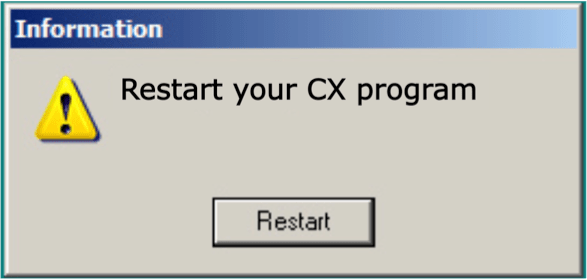Customer Experience (CX) is emerging as a multidisciplinary field. It’s not just operations, marketing, sales, design, or insights… all of the above is required to create an immersive and seamless experience for your customers.
That being said, the metric back bone of most CX programs rests in the Voice of the Customer (VOC) program. That is, those activities focused on getting customer and prospect feedback, getting it to the right people, and then doing something about it. If you are striking out for the first time to develop a VOC program or looking to upgrade your existing program here are some tips to consider.
1. Respect Your Customers
Customers are very savvy nowadays. In fact you are one. Do you really think the fake cursive writing is or the fictitious name for the signatory line of the survey is believable? Time to treat people with intellectual respect. Be honest about what you are doing and why you want them to help you. I remember when I gave up my Groupon account and tried to unsubscribe. It asked me if I was sure and then they threatened to beat an employee if I did. I persisted with my unsubscribe wishes to which Groupon delivered on their threat and I was required to watch a video of “Derick”, ostensibly a Groupon customer care employee, getting ambushed and faux assaulted by a co-worker. It was personal, it was authentic, and it was funny. It also made me feel a little guilty about booting Groupon. Keep it real and honest and your customers will help you out.
2. Scale Back the Scales
On a scale of 1 to 10 with 1 being “this really blows” to 10 being “I’m never going to fill out your stupid survey” please rate how much you like filling out scaled questions. Yea, I’m down with Likert, Guttman, Osgood, and all kinds of scales. They have their purpose, but it is a dated way and overused way to understand human attitudes and emotions. In scaled questions we are putting the burden on the respondent to encode their state of mind. In reality our job is to decode their state of mind from what they tell us, in the way they want to tell us.
While we still can’t abandon scales completely, we need to be moving toward more open ended questions to let people express themselves in the way they want. Intelligent probing can make the process more conversational and engaging and as a bonus yield better text analytics outcome on the back end. You’ll end up getting better data from real people. With the advances in text analytics from companies such as Lexilytics, Clarabridge, and Megaputer there no reason why you cannot make this happen today.
3. Keep it Short, Keep it Fun
No one wants to complete your 8 page survey except perhaps institutionalized populations. The days of even filling out a 4 page survey are over. Short back and forth conversations are the way to build rapport and intelligence. Uber for example, has a nice, brief, customer experience survey at the end of each transaction. Chatbots and AI assistance as made this approach even more scalable today. Rather than going deep with one individual we should be going wide with many. Short rapid feedback surveys can be stitched together to get a good idea of the overall journey from multiple sources.
4. Give Something Back
It doesn’t have to be an incentive. In fact, incentives tend to let the air out of the VOC balloon and can create a pseudo rating economy if left unchecked. People are narcissistic and like to talk about themselves and their opinions. Give them a forum to do so. Doubt me? Take a look at TripAdvisor where they have literally millions of reviews provided for free. Create an ecosystem where sharing is fun and your customer get something in return; ideally one that is intrinsically reward for participating. If you don’t, other big players will such as Amazon’s move on vehicle reviews and evaluations.
5. Make it Fun
Your brand has a personality. Or at least it should. Let that shine through in collecting Voice of the Customer. Make your connection with customers brand enhancing not brand detracting. Use it as opportunity to reinforce what your brand is all about. Companies like Customerville have put this at the forefront of their offering, delivering a feedback experience in parity with their clients’ brand experience. Bring a gaming element into the survey process is also a great way of engaging customers in the survey process and improving data quality at the same time. Finally, don’t forget the majority of your users are probably completing their survey via mobile device. If you aren’t providing a mobile-first environment that will definitely be un-fun experience.
6. Help Them
Nothing pisses customers off more when you ask their opinion, they ask for help, and you don’t do anything about it. Help them out. It’s social Karma. If they have a problem, make sure your system is set up to quickly acknowledge and resolve concerns. If they want to know more about you or your products and services get on it and tell them. This moral high ground that research cannot stoop to help matching people with solutions is silly. If they want know about that accessory or other upsell opportunity jump on it. But do it in a way that isn’t pushing product, but is matching solutions with needs. Amazon does this every day… seems like they are on to something.
7. Connect the Dots
“Can I have your membership number please?” No, you can’t. That’s your job. You have my phone number and my name; figure it out. Stop annoying customers by asking them about things that your company already knows. “Oh but it’s easier just to ask them” some will say. Yea, easier for the company. Stitch your intelligence together. Don’t make it seem like each time is the first date with a customer you may have had for 10+ years, use the information you have. VOC should build on itself. It should be learning over time. For that matter, there is a ton of information out there already. Doubt me? Do a little Google on yourself…it’s unnerving. Unfortunately, we are still living in a transactional world with transactional databases. We need to move toward a longitudinal view of the customer fusing the wake of consumer behavior with attitudes and emotions. Only then will we be able to really understand and model Lifetime Value well and do some really awesome predictive analytics.
8. Stop Worrying about Measurement
“Oh should I use a 5 point scale or a 10 point scale?”, here’s the truth. At the end of the day, it really doesn’t matter that much. I have read and written countless article on measurement and in my opinion, there is entirely too much focus on it. It is the focus on the tangible and easy versus the intangible and hard that has made the issue of measurement such an imperative. We need to focus on way to change human behavior. If you boil it all down that’s what CX is all about; how do I get employees and customers to behave, think, and feel differently? The measurement bit of that help you figure out what to do and how well you are doing to meet that goal, but the real hard work is in making it happen.
9. Focus on the Story
Move from report cards to stories to have the maximum impact on your organization. We are a story telling species. From the time we gathered around the campfire all looking like Chris Cornell (god rest his soul) it how we delivered wisdom. It’s the narrative, not the facts. That’s how we relate, that’s how we determine what is important. Our modern brain processes facts and figures and our primitive brain likes to think about Bob and how he got screwed at the car dealership. It’s life. Stories conquer fact, time after time. So let’s stop bemoaning that and get on board. Stop presenting dashboards and start presenting narratives. Make it personal. Make it an emotional. Create impact. You want to be heard, that’s how you cut through the clutter.
10. Good Enough is Good enough
What’s the best kind of dissertation? The one that is signed off and done. If there is one thing I learned in my 20+ years in CX, is that good enough is better than nothing. In fact, good enough is oftentimes much better than perfect. Don’t strive for perfect, strive for completion. Minimal Viable Product approaches have some real credibility and pragmatism to them; note the term “viable” is the qualifier. It’s good to go out and experiment and figure it out. It’s good to half a rough plan, but spend 10% planning and 90% doing. Don’t over complicate things. Try and keep it simple and keep it fast. You will see results sooner (and get attention) if you don’t wait for perfect and you go with good enough.
The Reboot
So those are some tips and tricks for re-envisioning your VOC program. You’ll notice that most of the suggestions for your reboot are about reframing what VOC is all about. Yes, it is about measurement, but that’s one small piece. Driving communication, engagement, and behavioral change is where the true returns are reaped. That’s just the beginning though. The multiples come when the whole organization is pulling in the same direction to make things happen. But that’s a topic for another day.
CX Sculpting. The Art of Pruning the Unnecessary
Sometimes creating a good experience is knowing when to take things away rather than adding them. Learn how in this brief article…



